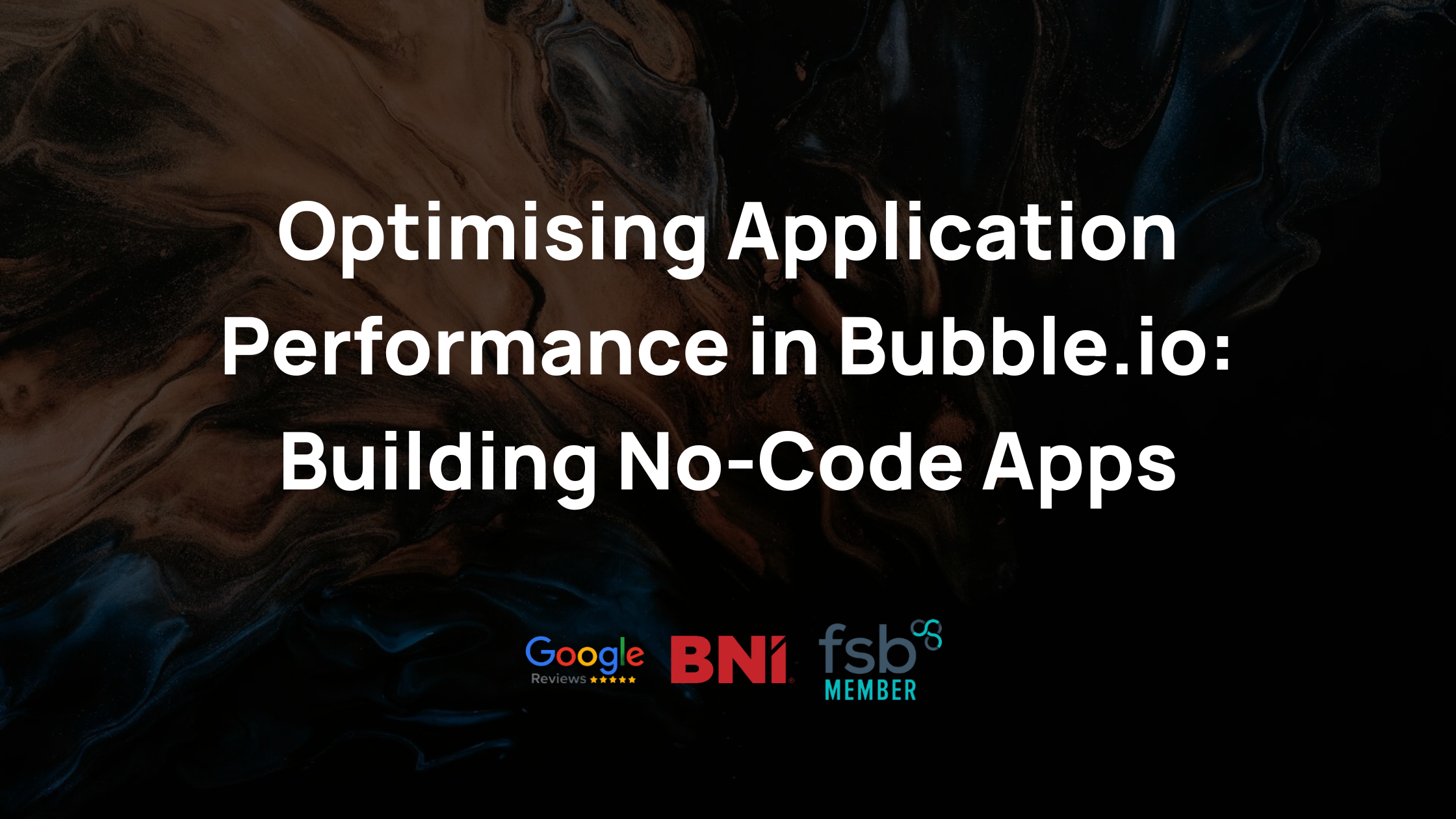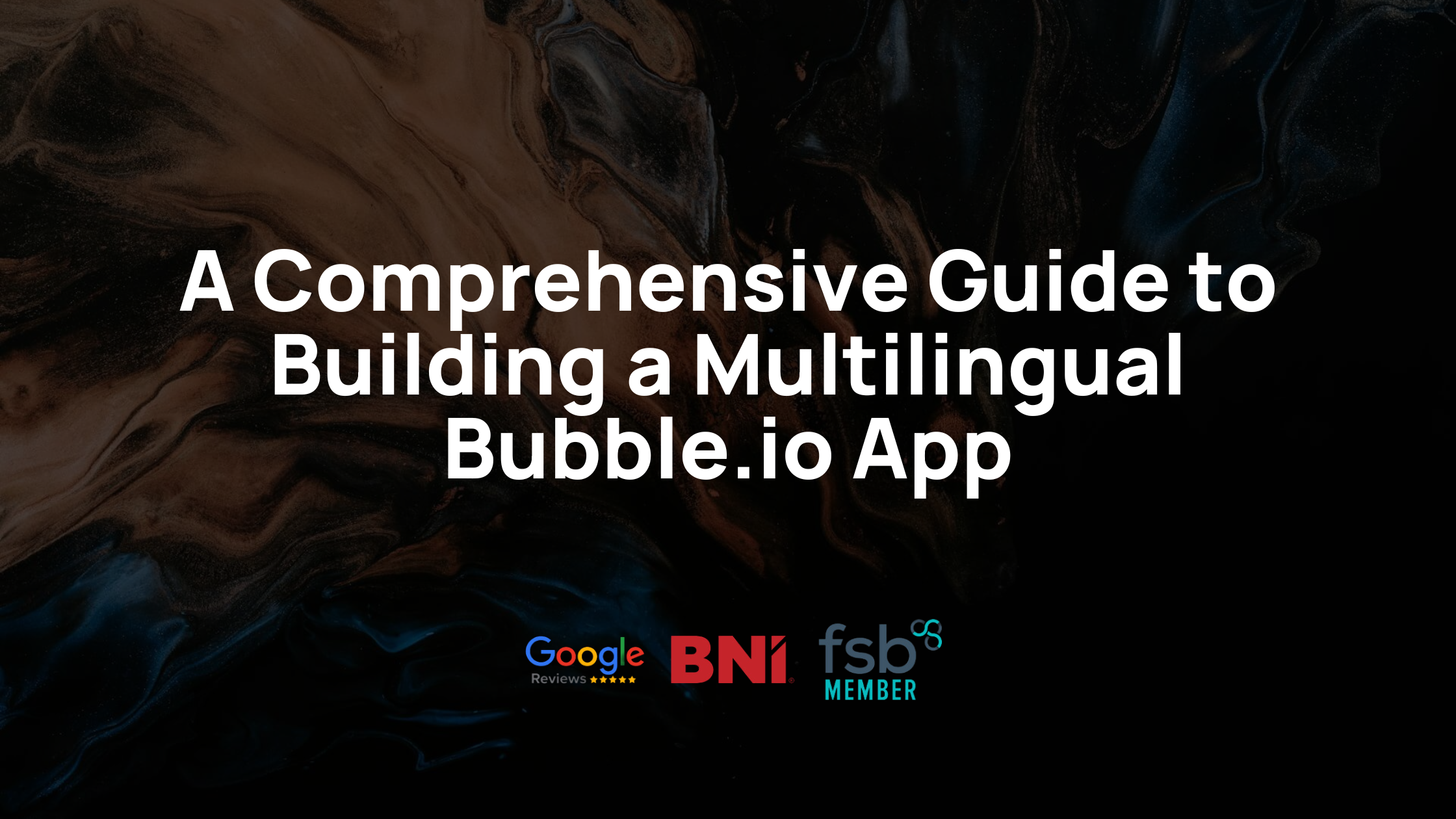How To Convert Your Bubble.io Web App To A Mobile Native App
If you have a web application developed on Bubble.io, you may eventually want to take it further by converting it to a mobile native app.
A mobile native app has numerous benefits, including faster navigation, offline capabilities, and enhanced user experiences for mobile users. In this tutorial, we'll guide you through the process of converting your Bubble.io web app to a mobile native app.
Understanding the Conversion Process
Before diving into the conversion process, it's essential to understand what it entails. Converting a Bubble.io web app to a mobile native app involves re-engineering the design, features, and functionality of the web app to fit mobile devices. This process requires a thorough understanding of both web app development and mobile app development.
One of the primary challenges of converting a web app to a mobile native app is ensuring that the app's user interface remains consistent across different devices. Mobile devices come in various sizes and resolutions, and ensuring that the app looks and feels the same on all devices requires careful planning and execution.
Another critical aspect of the conversion process is ensuring that the app's performance is optimized for mobile devices. Mobile devices have limited resources compared to desktop computers, and apps that are not optimized for mobile devices can be slow and unresponsive.
What is Bubble.io?
Bubble.io is a no-code web application development platform that allows developers to create web apps without coding. The platform uses a drag-and-drop interface to build web applications, making it easy for developers with little to no coding experience to create complex web apps.
One of the benefits of using Bubble.io is that it offers a high level of customization. Developers can customize every aspect of their web application, from the user interface to the backend functionality. Additionally, Bubble.io provides a wide range of pre-built plugins and integrations, making it easy to add new features to your web app.
What is a Mobile Native App?
A mobile native app is a software application developed primarily for mobile devices such as smartphones, tablets, and wearables. Native apps are typically downloaded and installed directly onto the device from app stores such as Google Play Store and Apple App Store.
Unlike web apps, which run in a browser, native apps have access to the device's hardware and software, allowing them to take advantage of features such as GPS, camera, and push notifications. Native apps also offer better performance and user experiences compared to web apps.
Benefits of Converting Your Web App to a Native App
Converting your web app to a mobile native app offers numerous benefits. One of the primary benefits is that it improves the user experience. Native apps offer a more seamless and intuitive user experience compared to web apps.
Additionally, native apps are faster and more responsive compared to web apps. This is because native apps are optimized for mobile devices and have access to the device's hardware and software.
Another benefit of converting your web app to a native app is that it provides offline capabilities. Native apps can store data locally on the device, allowing users to access the app's content even when they are not connected to the internet.
Finally, converting your web app to a native app can help drive revenue by allowing users to connect with your app more seamlessly. Native apps can be monetized through in-app purchases, subscriptions, and advertisements. Additionally, native apps help extend the reach of your web app by tapping into the millions of mobile device users across the world.
Preparing Your Bubble.io Web App for Conversion
Before converting your Bubble.io web app to a mobile native app, you need to optimize the app's design and features for mobile devices. This process involves ensuring cross-platform compatibility, optimizing design elements for mobile devices, and testing the app on various devices.
Converting your web app into a mobile native app is a crucial step in expanding your user base and reaching a wider audience. With the increasing use of mobile devices, it's essential to ensure that your app is optimized for mobile devices to provide a seamless user experience.
Optimizing Your Web App's Design for Mobile
The key to optimizing your web app's design for mobile devices is to prioritize simplicity, readability, and ease of use. Mobile users are often on-the-go and have limited time to navigate through complex design elements. Therefore, it's crucial to break down complex design elements into simple, easily navigable sections. This way, users can quickly find what they're looking for without getting lost in the app's complexity.
Eliminating any unnecessary visual elements is another way to optimize your app's design for mobile devices. Cluttered screens can be overwhelming and confusing for users, leading to frustration and a negative user experience. Therefore, it's important to keep your app's design simple and straightforward.
Additionally, ensure that your app's typography, color scheme, and images align with mobile device screens for a seamless visual experience. This way, users can easily read and navigate through your app without any visual distractions.
Ensuring Cross-Platform Compatibility
Ensuring cross-platform compatibility is essential to reach a wider audience and provide a seamless user experience. This process involves designing your app to support different screen sizes, platforms, and operating systems. By doing so, your app can run smoothly on various devices, making it accessible to a more extensive user base.
Using scalable design elements such as CSS3 and Bootstrap is another way to ensure cross-platform compatibility. These design elements allow your app to adapt to different screen sizes and resolutions, providing a consistent user experience across all devices.
Testing Your Web App on Different Devices
Testing your web app on various devices helps you identify any functionality or performance issues that need addressing before converting the app into a mobile native app. It's crucial to test your app on a variety of devices with different operating systems and screen sizes to ensure that it runs smoothly on all devices.
Testing your app on different devices also helps you gain valuable insights into how users interact with your app. By understanding how users navigate through your app, you can make necessary changes to improve the user experience.
In conclusion, optimizing your web app for mobile devices is a crucial step in expanding your user base and reaching a wider audience. By prioritizing simplicity, ensuring cross-platform compatibility, and testing your app on various devices, you can provide a seamless user experience and convert your web app into a successful mobile native app.
Choosing the Right Conversion Tool
Several conversion tools are available in the market today, each with different features, pricing models, and community support. It's essential to choose the right conversion tool based on your app's features, functionality, and design elements.
Comparing Popular Conversion Tools
Research various conversion tools to see how they compare in terms of features, pricing, and community support. Some of the popular conversion tools include Andromo, BuildFire, and Convertigo.
Evaluating Pricing and Features
Consider the pricing and feature sets of each conversion tool and compare them to your app's requirements. Choose the tool that offers the most cost-effective pricing model along with a comprehensive feature set.
Assessing Community Support and Documentation
Consider the level and quality of community support offered by each conversion tool provider. Tools that offer excellent documentation, user forums, and community support are ideal as they allow you to learn faster and troubleshoot issues that may arise quickly.
Converting Your Web App Using a Selected Tool
Once you've identified and chosen your conversion tool, it's time to move to the conversion process. This process involves setting up your conversion tool, configuring your web app for conversion, and running the actual conversion process.
Setting Up Your Conversion Tool
Follow the setup instructions provided by your conversion tool provider to set up the tool on your computer system. Ensure that you have all necessary software installed for the tool to run smoothly.
Configuring Your Web App for Conversion
The conversion tool provider will typically provide a step-by-step guide on how to configure your web app for conversion. The guide will include instructions on how to import your web app into the tool, configure design elements, and ensure cross-platform compatibility.
Running the Conversion Process
Once you've configured your web app, it's time to run the actual conversion process. Follow the tool provider's instructions carefully, and be patient as the process may take some time depending on your app's size and complexity. Once the conversion process completes, test your mobile native app on various devices to ensure that it's working correctly.
Conclusion
Converting your Bubble.io web app to a mobile native app involves a lot of planning, testing, and patience. However, the benefits of converting your web app to a native app are worth it. The key to successful conversion lies in optimizing your web app's design for mobile devices, testing the app on various devices, and choosing the right conversion tool. With proper planning and execution, you can create a mobile native app that extends your web app's reach and provides superior user experiences.
 By
By


